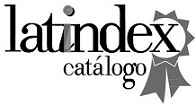Fabricación de placas térmicas de residuos textiles y almidón y su aplicación a una construcción en Mar del Plata
DOI:
https://doi.org/10.30972/arq.247995Palavras-chave:
economía circular, hábitat popular, confort higrotérmico, eficiencia energéticaResumo
En el hábitat popular en Mar del Plata se observan viviendas con déficit habitacional y sin confort
higrotérmico, ya que no se implementan aislantes térmicos. En este trabajo se propone el diseño de
placas térmicas utilizando los desechos de la industria textil y la alimenticia, de la misma ciudad. El
objetivo es optimizar los materiales y métodos disponibles para la fabricación de las placas
aplicables en las viviendas del hábitat popular y a su vez, analizar su aplicación en un núcleo
húmedo en el barrio Caribe. Para ello, se hacen pruebas en laboratorio e in situ. Se logran placas
con cinco densidades distintas que varían entre 551 kg/m3 y 279 kg/m3. En las pruebas en la obra
se observa facilidad en la aplicación y muy buena respuesta en las pruebas de manipulabilidad.
Dados estos resultados se propone seguir con otros ensayos, en particular, de conductividad
térmica.
Referências
Asdrubali, F., D’Alessandro, F., & Schiavoni, S. (2015). A review of unconventional sustainable building insulation materials. Sustainable Materials and Technologies, 4. https://doi.org/10.1016/j.susmat.2015.05.002
Atanasoska, K. (2021). Caracterización bioclimática de Mar del Plata.: Recomendaciones para el Diseño Arquitectónico. Investigación + Acción, 24. https://revistasfaud.mdp.edu.ar/ia/article/view/560
Atanasoska, K. (2023). Análisis térmico, higrotérmico y de ahorro energético de un núcleo húmedo en Mar del Plata. Congreso Regional de Tecnología en Arquitectura XIII CRETA, Córdoba, Argentina. https://congresos.faud.unc.edu.ar/xiii-creta/
Barbero-Barrera, M. del M., Pombo, O., & Navacerrada, M. de los Á. (2016). Textile fibre waste bindered with natural hydraulic lime. Composites Part B: Engineering, 94, 26-33. https://doi.org/10.1016/j.compositesb.2016.03.013
Briga-Sá, A., Nascimento, D., Teixeira, N., Pinto, J., Caldeira, F., Varum, H., & Paiva, A. (2013). Textile waste as an alternative thermal insulation building material solution. Construction and Building Materials, 38, 155-160. https://doi.org/10.1016/j.conbuildmat.2012.08.037
Cravino, M. C., & Segura, R. (2020). Escenarios posibles y deseables de la planificación urbana, la vivienda y el hábitat. https://repositoriosdigitales.mincyt.gob.ar/vufind/Record/RIDUNRN_830326a8f4f5cc62f263960cdde88f00
de Vera, B. (2018). Lo que le cuesta al medioambiente que usted vaya a la moda -. https://www.cronicadelquindio.com/noticias/mundo-1/lo-que-le-cuesta-al-medioambiente-que-usted-vaya-a-la-moda
Donmez Cavdar, A., Mengeloğlu, F., & Karakus, K. (2015). Effect of boric acid and borax on mechanical, fire and thermal properties of wood flour filled high density polyethylene composites. Measurement, 60, 6-12. https://doi.org/10.1016/j.measurement.2014.09.078
Fundación Ellen Macarthur. (2024). Fashion and the circular economy. https://www.ellenmacarthurfoundation.org/topics/fashion/overview
Graña, F. M., & Gonzalez Barros, A. (2019). Mapa productivo: Estudio global de las empresas industriales del Partido de General Pueyrredon.
Ibrahim, K. A., Naz, M. Y., Sulaiman, S. A., Ghaffar, A., Jamil, Y., & Abdel-Salam, N. M. (2017). Effect of Urea and Borate Plasticizers on Rheological Response of Corn Starch. Polymers, 9(9), Article 9. https://doi.org/10.3390/polym9090361
Instituto Nacional de Estadística y Censos de la República Argentina (INDEC). (2022). Censo Nacional de Población, Hogares y Viviendas 2022.
https://www.indec.gob.ar/indec/web/Nivel4-Tema-2-41-165
IRAM 11603. (1996). Acondicionamiento térmico de edificios. Clasificación bioambiental de la República Argentina.
IRAM 11605. (1996). Acondicionamiento térmico de edificios. Condiciones de habitabilidad en edificios. Valores máximos de transmitancia térmica en cerramientos opacos.
Kaya, B., Zorba, N. N., & Caner, C. (2023). Development of novel biodegradable film based on chitosan with borax (sodium tetraborate) and boron nitride and their biological activity.
International Journal of Food Science & Technology, 58(2), 890-897. https://doi.org/10.1111/ijfs.15743
Monacchi, M. C. (2020). Diseño e identidad en las economías regionales. Caso industria textil Mar del Plata, Argentina. Designia, 8(1), 51-77. https://doi.org/10.24267/22564004.522
Pavel, C. C., & Blagoeva, D. T. (2018). Competitive landscape of the EU’s insulation materials industry for energy-efficient buildings [Technical report by the Joint Research Centre (JRC)].
chrome-extension://oemmndcbldboiebfnladdacbdfmadadm/https://www.agendaconstructiilor.ro/files/files/kj1a28816enn.pdf
Secretaría de Desarrollo Territorial, Hábitat y Vivienda. (2023). Registro Nacional de Barrios Populares (ReNaBaP). Argentina.gob.ar.
https://www.argentina.gob.ar/habitat/integracion-socio-urbana/renabap
Yajnes, Arq. M. E., & Caruso, Arq. S. I. (2015). Innovación en materiales a partir de desechos. ARQUISUR, 8, 50-63. https://doi.org/10.14409/ar.v0i8.5493
Zuo, Y., Gu, J., Tan, H., & Zhang, Y. (2015). Thermoplastic starch prepared with different plasticizers: Relation between degree of plasticization and properties. Journal of Wuhan University of Technology-Mater. Sci. Ed., 30(2), 423-428. https://doi.org/10.1007/s11595-015-1164-z
Downloads
Publicado
Versões
- 2025-02-05 (2)
- 2024-12-27 (1)
Como Citar
Edição
Seção
Licença

Este trabalho está licenciado sob uma licença Creative Commons Attribution-NonCommercial 4.0 International License.
Los autores ceden a Arquitecno los derechos de publicación de sus trabajos, toda vez que hayan sido admitidos como parte de alguno de sus números. Ellos, no obstante, retienen los derechos de propiedad intelectual y responsabilidad ética así como la posibilidad de dar difusión propia por los medios que consideren.





52.jpg)
